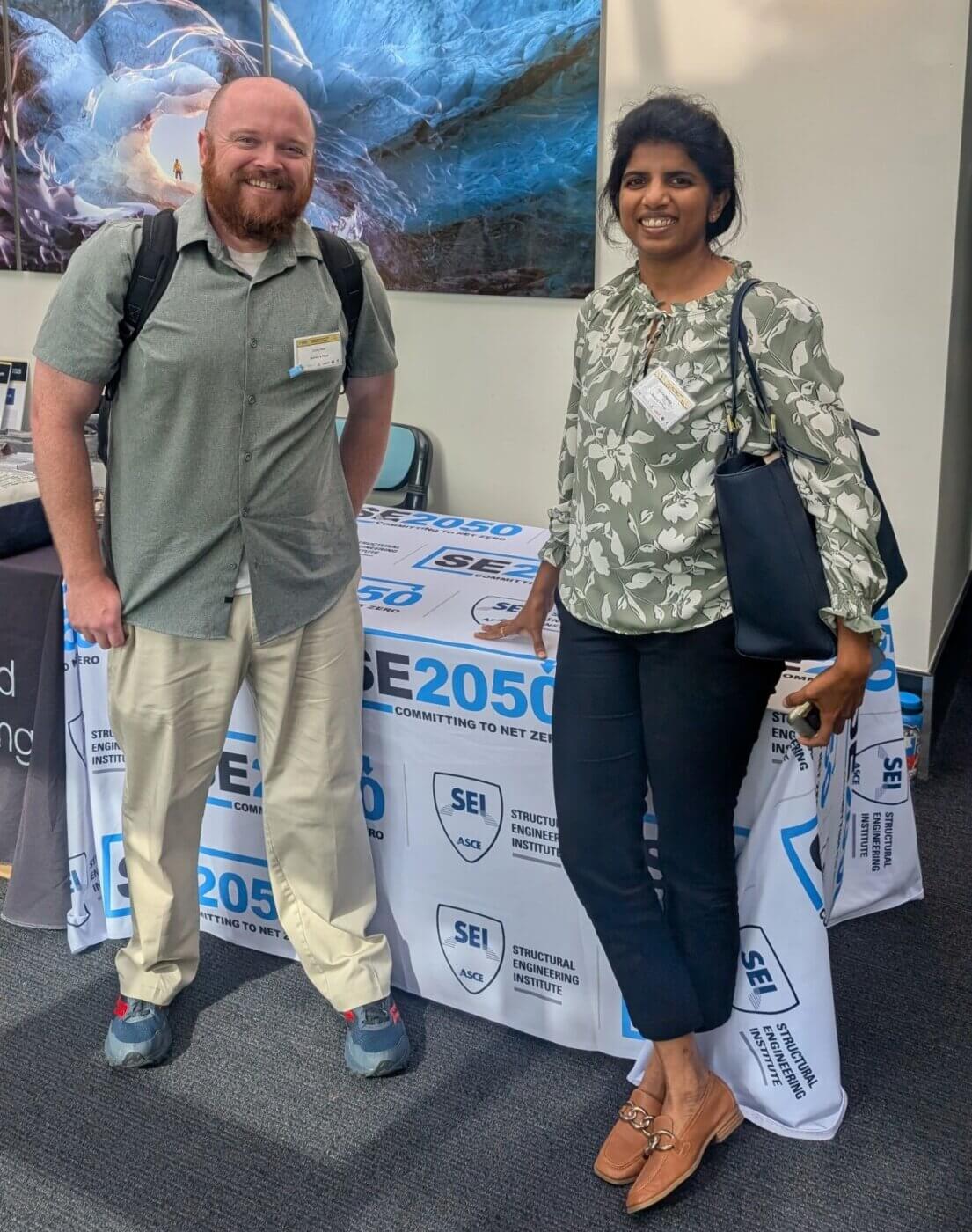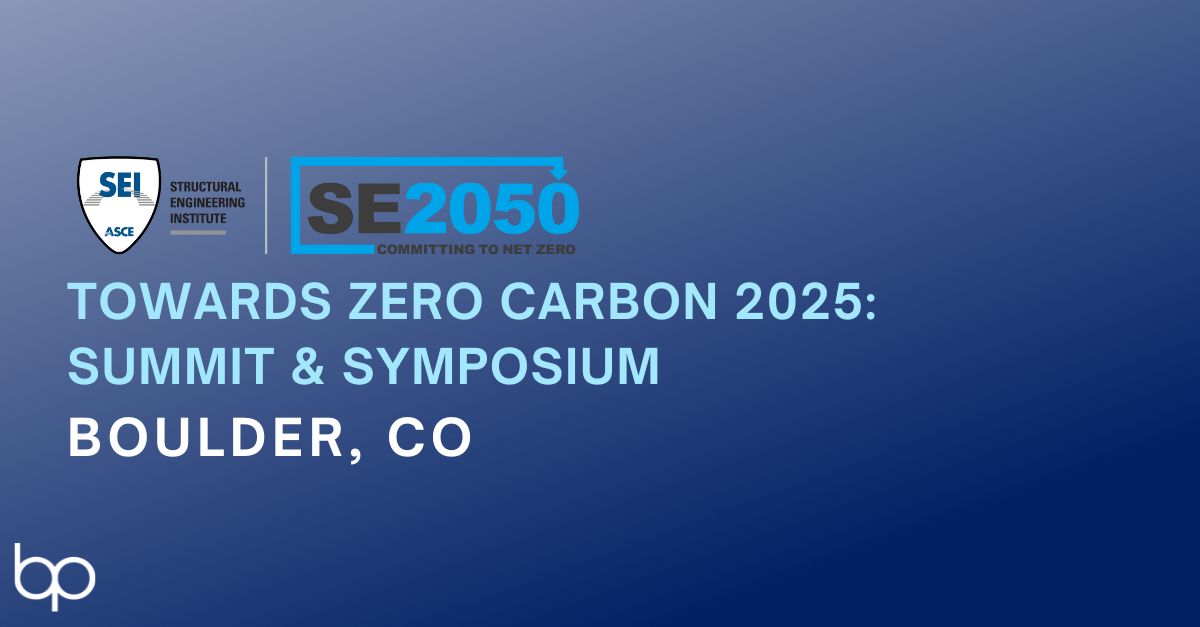A few weeks ago, two of our structural engineers, Corey Rice and Nikitha Ponaka, attended the SE2050 conference in Boulder, CO, a gathering focused on embodied carbon and the structural engineering profession’s role in addressing climate change. The key message? Our profession is uniquely positioned to make a powerful impact, and the time to lead is now. Here are four major insights we brought back from the conference:
1. Structural Engineers Must Lead on Embodied Carbon Reduction
As structural engineers, we have more influence on a building’s embodied carbon than most realize. From specifying lower-carbon materials to optimizing structural systems and making smart early-stage decisions, we are on the front lines of sustainability. This isn’t just a design opportunity, it’s a professional responsibility.
Reducing carbon emissions should be as fundamental as safety or serviceability. When we treat sustainability as a core design parameter rather than an add-on, we uphold our duty to the public and the planet.
2. Early Collaboration Is Key to Meaningful Impact
The biggest opportunities to reduce embodied carbon happen early during conceptual design and system selection. That means our teams must collaborate from day one with architects, owners, and contractors to establish clear sustainability goals and run preliminary life cycle assessments (LCAs).
Also, success doesn’t happen in silos. Normalizing sustainability across all projects (not just high-profile or “green” ones) requires a shift in mindset. Start early, track performance throughout, and build sustainability into the everyday workflow.
3. Local Policies Are Driving Change. Engineers Must Stay Ahead
While federal-level progress on embodied carbon policy has slowed, momentum is building at the state and municipal levels. Authorities It was shown that Authorities Having Jurisdiction (AHJs) are starting to adopt new carbon requirements and offering incentives, and engineers must be prepared to adapt.
Aligning carbon strategies with client values such as cost, aesthetics, and durability is essential. Even small wins, like consistently tracking Environmental Product Declarations (EPDs), can help shift firm culture and drive long-term progress.
4. Data and Digital Tools Will Shape the Future of Structural Design
Another theme that emerged at SE2050: the urgent need for high-quality data, and we need a more effective approach to using it. Structured carbon data, consistent LCA methodologies, and reliable EPDs are the foundation of sustainable design in the digital age.
Tools like AI are starting to support this effort. While still emerging, AI has the potential to optimize material choices, spot inefficiencies, and even suggest carbon-reducing design strategies. But to harness this potential, we must treat data as a design input; not an afterthought.
Final Thoughts
The SE2050 conference underscored that structural engineers aren’t just participants in the fight against climate change; we are leaders. By integrating sustainability into every decision, collaborating early, staying agile in a changing policy landscape, and embracing digital innovation, we can shape a better-built environment for future generations.
Want to learn more about our commitment to sustainable design? Click here to learn more about our commitment to SE 2050.

